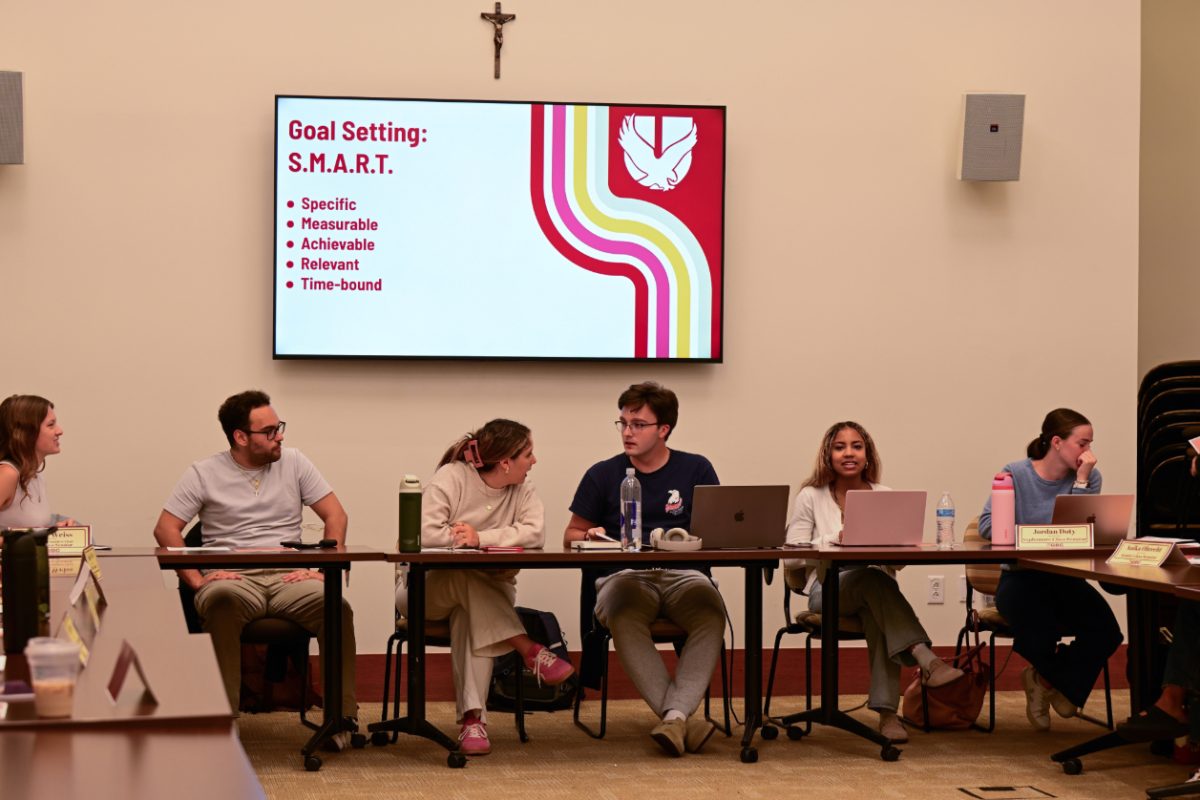Renewed oversight over the Innovation Fund and the Taking Green Initiative Fund (TGIF) by the Undergraduate Government of Boston College (UGBC) will allow for students and organizations—both registered and non-registered student organizations—to seek out funding for projects, programming, and events with increased clarity. These funds were created with the intention of sponsoring student creativity and allocating funds to individuals and groups that would otherwise not already have access to funding from other bodies.
These new funds are structured so that approved individuals, groups, or organizations receive seed money—provided by UGBC to those outside of UGBC—that goes directly and immediately toward funding an idea, whether that be an event, initiative, program, or project.
“The main goal is to really give students the funding to pursue the idea that they have,” said Matt Lavelle, UGBC senator, chairman of the Student Assembly’s Finance Committee, and CSOM ’17. “This really gives them the stepping stone and capability to put that into action, at the same time it supplements organizations on campus that do want to run events but don’t have the funding from a typical funding source.”
The fund draws its money from an allocation in UGBC’s budget, which is derived from the Student Activities Fee. The Student Assembly has primary oversight over both funds and acts as the primary trustee for funding—particularly, the Financial Affairs Committee within the Student Assembly (SA).
Although each fund has the same basic infrastructure and application process, the criteria for each is different, as the two funds were implemented to serve different purposes.
According to the Innovation Fund Guidelines, the Innovation Fund is intended to finance innovative projects and initiatives on campus, with three areas of focus: Tech Challenge, Social Innovation, and General Benefit.
The Taking Green Initiative Fund also seeks to foster creativity, but with a focus on improving sustainability. “The fund’s purpose is multifaceted: it can serve as seed money for student-led projects, an incentive to address ‘green’ issues on campus, or an allocation for initiative ‘green’ programming on campus,” reads the Taking Green Initiatives Fund Guidelines.
According the Fund Guidelines, in order to be deemed eligible for funding, applicants must be registered undergraduate students; the proposed initiative, event, or program must be open to all undergraduate students; and, if the request is an organization allocation, the proposal must be in accordance with that organization’s mission. Furthermore, the organization must not have received funding for the proposed idea from any other body, like the Student Organization Funding Committee (SOFC), before applying for the Innovation Fund or the Taking Green Initiatives Fund.
“Just naturally, if you’re a registered student organization you will receive funding from SOFC, but when it comes to the specific initiative, event, or project, they cannot have received funding from SOFC before that,” Lavelle said.
In keeping with the goals of the program—to foster student innovation and creativity through the allocation of funds—the current infrastructure will allow for non-registered student organizations to apply for funding, as any registered undergraduate students can apply.
While both SOFC and UGBC have the ability to fund student organizations, SOFC serves as the primary source of funding for the 200 registered student organizations.
“UGBC’s funds serve mainly as a complement to SOFC funding, either for non-registered student organizations, or for RSOs that the SOFC cannot fund fully, since we only fund clubs up to certain caps per our guidelines,” said Jackson Bowers, SOFC Chair and CSOM ’17. “I think UGBC’s funds will have the biggest impact for non-registered student groups, since these groups cannot get funds from SOFC.”
According to the Fund Guidelines, members of UGBC are ineligible to apply for individual allocations, and campus publications, the campus activities board (CAB), and SOFC are ineligible to apply for organizational allocations.
The initial application process is done through OrgSync, where prospective applicants submit the appropriate form for their desired funding. The application examines the logistical aspects of the proposed event or initiative, and also asks how it will contribute to the student body.
“Our main goal behind it is to make sure that it’s new, something outside of the box, and something that adds value, in addition to benefitting a lot of different students on campus—not narrowly towards one group or person,” Lavelle said.
After submitting the form, the individual or group meets with the Financial Affairs Committee to discuss the application in an interview. If the Financial Affairs Committee approves the application, then the request goes to a vote in the next SA meeting.
If the majority votes in approval of the allocation of funds, the funds are granted. If their allocation request is denied, applicants may appeal the decision by appealing to the executive vice president (EVP) of UGBC, currently held by Connor Bourff, A&S ’15.
Courtesy of Matt Lavelle
These funds have been in existence since Sept. 2014, but they are currently undergoing slight policy revamping and re-working with the aim of heightened accountability, oversight, and eligibility standards.
Currently, there is no formal oversight by UGBC over the students and organizations that receive funding, beyond the stipulation that the event or program for which the funds are allocated must visibly include the “Funded by UGBC” logo in some capacity.
Lavelle also noted the potential for eligibility guidelines to be revised so that individuals may no longer apply for funds individually, but might instead be required to apply with a small group of people.
“We are working on the specific funding eligibility, particularly in regards to individuals that apply because we want to make sure that these students take responsibility for the funding that they are given,” Lavelle said.
Another policy change for the funding program includes heightened communication between those who received funding and UGBC, so that they may be able to more efficiently track the progress the group or individual has made to meet that event, initiative, or program.
Ultimately, the slight adaptations of policy were made in hopes of increasing the efficiency and success of the individual or group’s proposed idea.
“The point of the fund is a recognition that UGBC does not have all the answers, and there are students with awesome ideas,” Lavelle said in an email. “We wanted to make sure to put aside accessible money for students to use to realize a vision that can benefit other students.”
Featured Image by Margaux Eckert / Heights Staff














